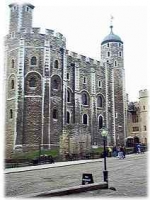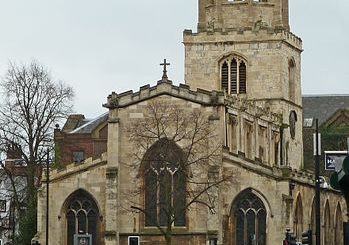The Lamb Inn
Demolished in 1905, The Lamb Inn became a centre of attention during the 18th century with an investigated and well reported poltergeist like haunting that lasted over a year. The Lamb Inn dated from 1651 and stood between Gloucester Land and Lawford Street. There is I believe nothing remaining of the old building now.
The experiences began on 5 November 1761 with a series of scratching and rapping noises in the bedroom of thirteen year old Molly and eight year old Dobby, both being daughters of the landlord, Richard Giles. Over the following year the experiences grew in intensity. Furniture and other items would be seen to move around, the girls would be bitten on the arms and neck, slapped, pricked with pins and pinched.
 Henry Durbin, a pious local druggist from based on Redcliff Street recorded the experiences and they were printed in 1800 entitled ‘Narrative of Some Extraordinary Things That Happened to Mr Richard Giles’s Children’. (Reprinted as Witchcraft at the Lamb Inn, Bristol 1971). Durbin himself was astonished to witness a wine glass ‘rise from the drawers (on which it had been placed) without hands. It rose about a foot, perpendicularly from the drawers; then the glass seemed to stand, and thereupon inclined backwards, as if a hand had held it; it was then flung with violence about five feet.’
Henry Durbin, a pious local druggist from based on Redcliff Street recorded the experiences and they were printed in 1800 entitled ‘Narrative of Some Extraordinary Things That Happened to Mr Richard Giles’s Children’. (Reprinted as Witchcraft at the Lamb Inn, Bristol 1971). Durbin himself was astonished to witness a wine glass ‘rise from the drawers (on which it had been placed) without hands. It rose about a foot, perpendicularly from the drawers; then the glass seemed to stand, and thereupon inclined backwards, as if a hand had held it; it was then flung with violence about five feet.’
The case took an interesting and sinister twist when they started to communicate with the spirit through a series of coded knocking and it identified itself as having been summoned by a witch from Mangotsfield, hired by a rival of Richard Giles, who had a new cart haulage business servicing the route between Bristol and London. Suddenly seemingly innocent incidents like one of the cart horses having a fit and a cart becoming stuck in mud, seemed to strengthen the notion of the existence of a curse upon the family.
Henry Durbin continued his investigation, bringing in around seven ministers of the church who questioned the spirit in Hebrew, Latin and Greek, receiving positive responses. Those accompanying Durbin included Rev Symes of St Werburgh’s, Rev J Camplin of Bristol Cathedral and Samuel Seyer who was the Headmaster of the Grammar School between 1743 and 1764.
The physical manifestations increased and found the girls being thrown from their beds, so strong and violently that three men were unable to hold the girls down The experiences did diminish when the girls were separated and they were eventually taken into the household of friends to protect them.
Richard Giles died on 16 May 1762 after taking ill. On the 12 May he had been travelling back from Bath when his horse’s harness broke. An old woman was stood nearby when the incident happened, though Giles did not speak to her. The spirit told Durbin that witchcraft had killed Mr Giles and the presence of the old woman put a mysterious twist to his final journey, even though it was probably totally innocent.
When the children were re-united the experiences commenced again and the spirit, still talking with Durbin informed him that the witch had been paid extra to continue the torment.
The activity did cease when Mrs Giles approached the White Witch of Bedminster who using occult powers of some sort put a stop to it.
It has been suggested that the whole affair was exploited, maybe devised by Mrs Giles in order for the Lamb Inn to develop a reputation of being haunted, hence the value of the property dropped enough for her mother, Mrs Nelmes to buy it at a good price.
What makes the Lamb Inn case interesting is the written account and investigation into the case by Henry Durbin. Instead of hearsay and folklore, we have an actual account of an 18th century haunting. However, Durbin seemed to believe that he was dealing with an evil spirit, the familiar of a practitioner of black magic and therefore didn’t approach the case with a true open mind, therefore his account the case is sadly not as valuable as it could have been.




Recent Comments